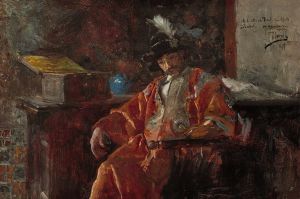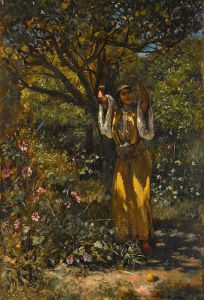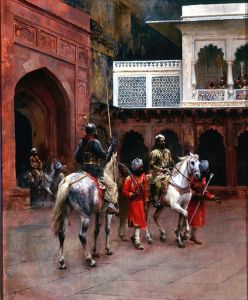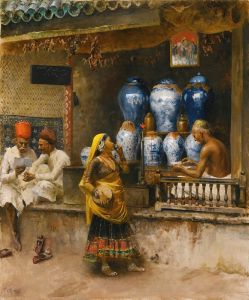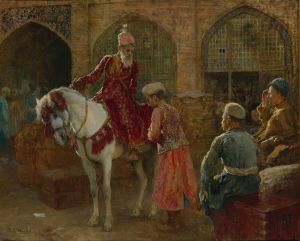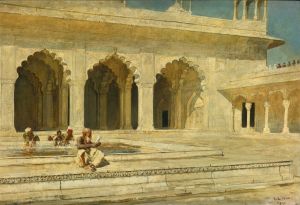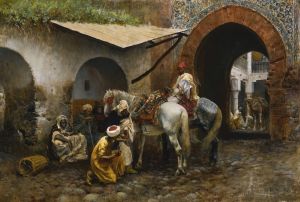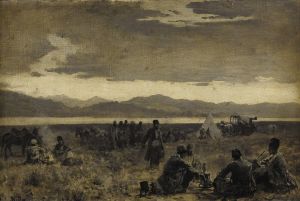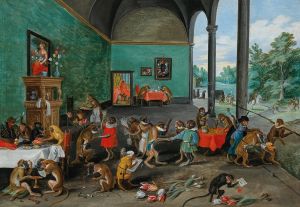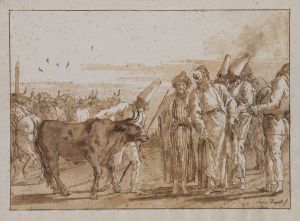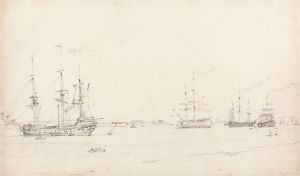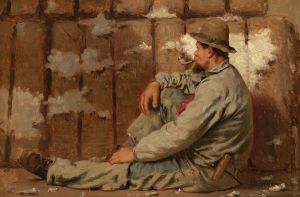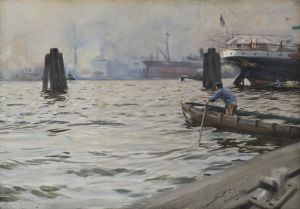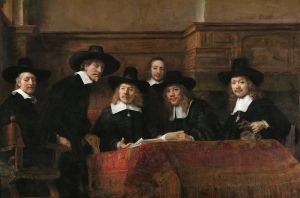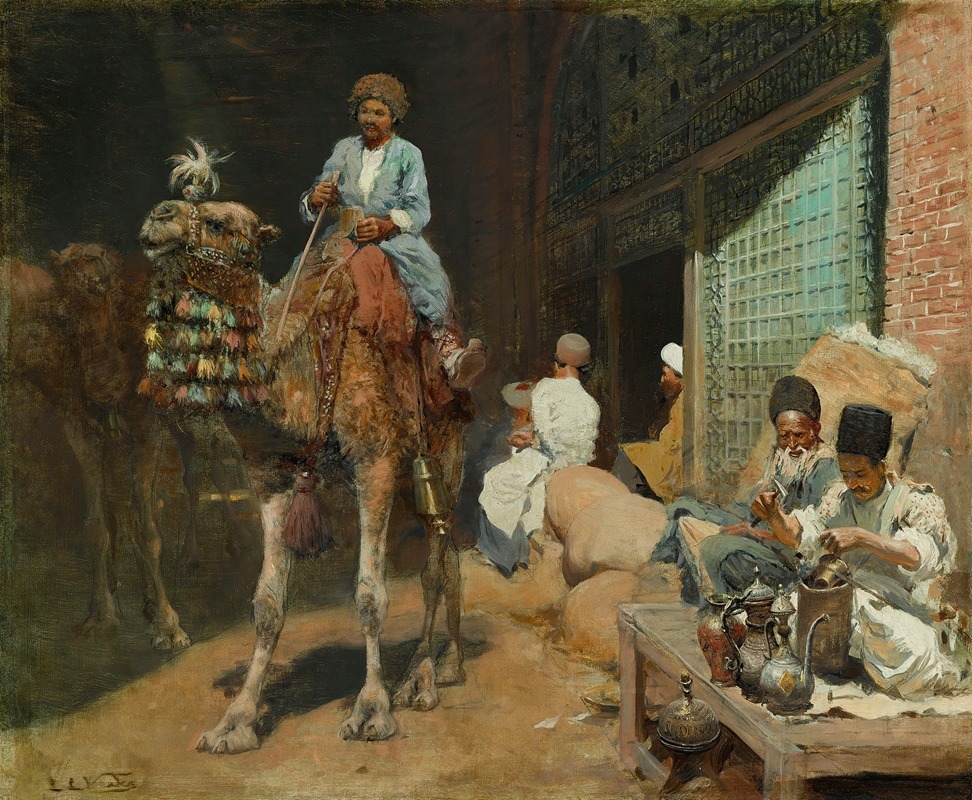
A market in Ispahan
A hand-painted replica of Edwin Lord Weeks’s masterpiece A market in Ispahan, meticulously crafted by professional artists to capture the true essence of the original. Each piece is created with museum-quality canvas and rare mineral pigments, carefully painted by experienced artists with delicate brushstrokes and rich, layered colors to perfectly recreate the texture of the original artwork. Unlike machine-printed reproductions, this hand-painted version brings the painting to life, infused with the artist’s emotions and skill in every stroke. Whether for personal collection or home decoration, it instantly elevates the artistic atmosphere of any space.
Edwin Lord Weeks was an American artist known for his Orientalist paintings, capturing scenes from his travels in the Middle East and South Asia during the late 19th century. One of his notable works is "A Market in Ispahan," which exemplifies his fascination with the exotic and vibrant life of the regions he visited.
Edwin Lord Weeks was born in Boston in 1849 and developed an early interest in art and travel. He studied under Jean-Léon Gérôme in Paris, a prominent figure in the Orientalist movement, which significantly influenced his style and subject matter. Weeks embarked on numerous journeys to the Middle East, North Africa, and India, where he found inspiration for his paintings.
"A Market in Ispahan" is a vivid depiction of a bustling marketplace in Isfahan, a city in Iran renowned for its rich history and cultural significance. Isfahan, often referred to as "Half of the World" due to its historical grandeur, was a major center of trade and culture during the Safavid dynasty. Weeks' painting captures the essence of this vibrant city, showcasing the daily life and commerce that characterized its markets.
The painting illustrates a lively scene filled with merchants, shoppers, and various goods on display. Weeks' attention to detail is evident in the intricate architecture and the colorful attire of the figures, reflecting the diverse cultural influences present in Isfahan. His use of light and shadow adds depth to the composition, creating a sense of realism and immediacy that draws the viewer into the scene.
Weeks was known for his ability to convey the atmosphere and energy of the places he painted, and "A Market in Ispahan" is no exception. The painting not only serves as a visual record of a specific time and place but also highlights Weeks' skill in capturing the nuances of light, color, and texture. His work is characterized by a meticulous approach to detail and a keen interest in the interplay between architecture and human activity.
Throughout his career, Weeks' paintings were celebrated for their authenticity and artistic merit. He was a member of the Society of American Artists and exhibited widely in Europe and the United States. His works were well-received by both critics and the public, earning him a reputation as one of the leading Orientalist painters of his time.
"A Market in Ispahan" remains a testament to Weeks' artistic vision and his ability to transport viewers to distant lands through his art. The painting is a valuable piece of cultural history, offering insights into the daily life and architectural beauty of Isfahan during the late 19th century. Today, Weeks' works are held in various public and private collections, continuing to captivate audiences with their rich detail and evocative portrayal of the exotic locales he so admired.





